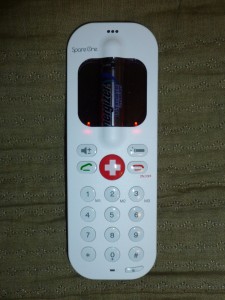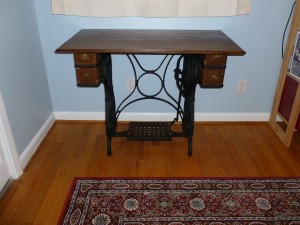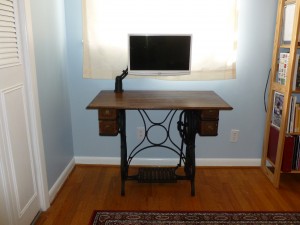I’m going to be building a bubble display. So, here is my collection of related work:
- The Information Percolator ( video ) – 32 tubes, 40mm in diameter. Overall display size 1.4m (wide) by 1.2m (tall). Approximately 25 separate “bubbles” can fit in a 1.2m tall tube. Water was used as the medium. 40mm tubes worked “better” than 20mm or 25mm tubes. Used an aquarium air-stone as the diffuser at the bottom of each tube. Each tube was also connected to all other tubes and a drain so that the water level would be equalized between them, and the water could be drained. Each tube was powered by an aquarium air pump controlled by a solid state relay. Each tube had it’s own check valve (to keep the water from flowing into the pump when turned off) and an airflow adjustment valve (to adjust for variations between different air pumps). Timing of air release is accurate to a few milliseconds, but only 25ms accuracy was needed. Note that the time a particular tube was “off” modifies how much water needs to be expelled from the system before air will flow, so sometimes 50ms is needed to produce a bubble.
- Bubble Display (video) by Jon Bennett, Sahinaz Safari, and Gouting (Jane) Chang at the University of Waterloo is very well documented. It used glycerin as the medium and non-defused bubbles for a cleaner look and a slower scroll rate. 24 valves spaced 4.7 cm apart with baffles to keep the bubbles separated. They used a high pressure compressor with a regulator to output 12psi air at each valve. They had air pressure “accumulators” to provide a buffer so multiple valves firing at once wouldn’t reduce the pressure too much. They also had a manifold (possibly with valves to modify the air flow to each valve?) A check valve (clippard MCV-1AB) kept the glycerin from flowing back into the system. They eventually selected Parker A005-C23-2P valves that were operated for 10-20 miliseconds “on-times” (50 microsecond timing resolution was required). His suggestion was to use even smaller valves. Overall cost was large, due to the use of “full-price” pneumatic components.
- The bubble Screen ( Video ) Bubble Screen by Beta Tank – The website was down when I accessed it, so not many details currently available.
- Matt Bell has been working on a small bubble display and making steady progress improving it. His display uses solenoid operated valves to inject the bubbles, and his improved version uses individual tubes for each column.
- Update: PipeDream III – I missed this one in my initial roundup, but it was mentioned in the comments of a hack-a-day post. Uses small tubing so that the bubbles don’t “catch up” to previous bubbles and solenoids to add the air.
- Update: Bulb Bubble Display (video: video ) – I believe this bubble display was completed in 2013 (after mine) and I found it via a post to my bubble displays project video page on YouTube. It uses 64 tubes, with compressed air injection via valves controlled via shift registers. The tubes are part of a “garden partition” or tuftex type plastic wall that is already divided into cavities. I LOVE the idea of using that for the tubes, as it eliminates a lot of the tube construction / allignment issues (although I imagine you still have to seal the bottom well… They used silicon molded on the bottom of the “wall”).
- If I missed your favorite bubble display, send me a URL linking to some useful information!
Not bubble displays, but related, waterfall displays like this one, this one, or this one are also cool, but run a lot faster, and in the opposite direction.
My thoughts:
Water for a fast rising bubble, glycerin for a slow rising bubble. Air-stones for a diffused look, or a tube for solid bubbles (which look better in glycerin)…overall the choices appear to be an aesthetic one.
Everybody who starts off with a single tank eventually goes to a series of tubes or baffles to keep the bubbles from interacting with each other (drag and drafting effects), unless they space the bubble generators out very far apart.
Carefully controlling the amount of air that is released appears to be the hardest aspect of the project. Aquarium pumps appear to have less control than solenoid operated pneumatic valves.
Common problems were leaks and difficulties sealing tank seams and mounting issues.
The biggest cost appears to be the hardware for each tube that produces the actual bubbles, with pneumatic (solenoid operated air valves) being more expensive than aquarium air pumps. I don’t plan on paying retail for my air pumps or electrically operated valves. Now, if only I could find a surplus supplier of check valves….
Most of these bubble displays were relatively short. Seeing as how you get the vertical axis “for free”, it seems like you should make your bubble display as high as your tank/tube allows. At a minimum, a six-foot height sounds like a good starting point.








